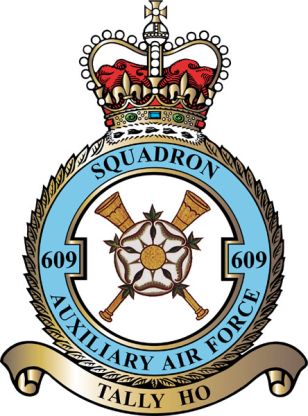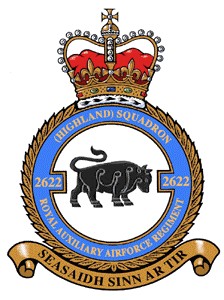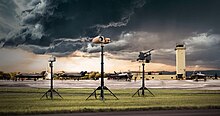
Royal Air Force Akrotiri, commonly abbreviated RAF Akrotiri is a large Royal Air Force (RAF) military airbase on the Mediterranean island of Cyprus. It is located in the Western Sovereign Base Area, one of two areas which comprise Akrotiri and Dhekelia, a British Overseas Territory, administered as a Sovereign Base Area.

The Royal Air Force Regiment is part of the Royal Air Force and functions as a specialist corps. Founded by Royal Warrant in 1942, the Corps carries out soldiering tasks relating to the delivery of air power. Examples of such tasks are non-combatant evacuation operation (NEO), recovery of downed aircrew, and in-depth defence of airfields by way of aggressively patrolling and actively seeking out infiltrators in a large area surrounding airfields. In addition the RAF Regiment provides Joint Terminal Attack Controllers (JTACs) to the British Army in the Tactical Air Control Party (TACP) role, and provides flight size commitment to the Special Forces Support Group.

The Joint Chemical, Biological, Radiological and Nuclear Regiment was a specialist expeditionary unit of the British armed forces. Personnel of the Joint CBRN Regiment were trained in the detection, identification and monitoring of nuclear, biological and chemical weapons.

The Royal Air Force Police (RAFP) is the service police branch of the Royal Air Force, headed by the provost marshal of the Royal Air Force. Its headquarters are at RAF Honington and it deploys throughout the world to support RAF and UK defence missions.

No. 1 Squadron RAF Regiment is a field squadron of the RAF Regiment in the Royal Air Force. Its mission is protection of RAF bases from ground attack, and patrolling a large area around main operating bases abroad, in order to defend aircraft on ingress and egress from surface to air attack. It is currently based at RAF Honington.

No. 51 Squadron RAF Regiment is a field squadron of the RAF Regiment in the Royal Air Force. Its mission is protection of RAF bases from ground attack.
Multi-National Division (South-East) was a British commanded military division responsible for security in the south east of Iraq from 2003 to 2009. It was responsible for the large city of Basra and its headquarters were located at Basra Airport. The division was initially responsible for the governorates of Al Muthanna, Maysan, Basra, and Dhi Qar. MND-SE was a subordinate division of Multi-National Corps Iraq. Multi-National Corps Iraq was itself part of Multi-National Force-Iraq.

The II Squadron RAF Regiment is a Field Squadron of the RAF Regiment based at RAF Brize Norton. Some of its gunners receive parachute training.

No. 609 Squadron of the Royal Auxiliary Air Force, originally formed as a bomber squadron and in the Second World War active as fighter squadron, nowadays provides personnel to augment and support the operations of the Royal Air Force. The squadron is no longer a flying squadron, but instead has the role of Force Protection. It is currently based at RAF Leeming, North Yorkshire.
On 1 April 2006 Expeditionary Air Wings (EAWs) were formed at nine of the RAF's Main Operating Bases. Each EAW has its own identity and is led by the Station Commander, supported by their Station management team. The deployable elements of the station structures form the core of each EAW, reinforced by elements of the Air Combat Service Support Units (ACSSUs). Flying and Force Protection force elements are attached to meet the requirements of each operation. EAWs enable the RAF to train as cohesive air power units which are prepared and capable of transitioning quickly from peacetime structures and deploying swiftly on operations in tailored packages.

No. 2622 (Highland) Squadron RAuxAF Regiment, is a Royal Auxiliary Air Force RAF Regiment reserve squadron based at RAF Lossiemouth. It is the northernmost RAuxAF Unit in the United Kingdom and was formed in 1979 to assist with the ground defence of that airfield. Initially, personnel were recruited solely from the local area but recruiting now extends as far south as Edinburgh and Glasgow and to the North, East and West Coasts of Scotland. The Squadron is established for 116 Auxiliary personnel plus a small contingent of regular RAF personnel.

No. 26 Squadron RAF Regiment was an RAF Regiment Field Squadron between 1951 and 2008. It was reformed in 2010 as a specialist Chemical, Biological, Radiological and Nuclear (CBRN) Squadron initially based at RAF Honington in Suffolk. When it was a Field Squadron, it served at locations such as RAF Abu Sueir, RAF Habbaniya, RAF Amman, RAF Tymbou, RAF Nicosia, RAF Changi, RAF Bicester, RAF Gutersloh and RAF Laarbruch. It took part in Operation's Granby and Desert Storm in 1990-91 and latterly it was based at RAF Waddington as a Rapier Squadron.
No. 3 Squadron RAF Regiment was a field squadron of the RAF Regiment in the Royal Air Force. Its mission was protection of RAF bases from ground attack.

No. 15 Squadron RAF Regiment is a field squadron of the RAF Regiment in the Royal Air Force. Its mission is protection of RAF bases from ground attack. The squadron's headquarters is at RAF Marham, having moved from RAF Honington.

Shaibah Air Base is an Iraqi Air Force airfield in the Basrah Governorate of Iraq.
No. 903 Expeditionary Air Wing is an Expeditionary Air Wing of the Royal Air Force (RAF). It is currently based at RAF Akrotiri on the Mediterranean island of Cyprus, and is tasked with conducting operations against Islamic State of Iraq and the Levant (ISIL) in Iraq and Syria.

3 RegimentArmy Air Corps is a regiment of the British Army and is part of the 1st Aviation Brigade Combat Team and Joint Helicopter Command (JHC). 3AAC is based at Wattisham Flying Station in Suffolk, England. This regiment operates the AgustaWestland Apache AH1 and AH-64E Apache attack helicopters.
No. 2503 Squadron RAuxAF Regiment is a Royal Auxiliary Air Force RAF Regiment reserve squadron based at RAF Waddington, in Lincolnshire, fairly close to the city of Lincoln and RAF Cranwell. Gunners are recruited both from ex-regulars in the RAF Regiment and civilians in a 50 miles radius surrounding RAF Waddington. The squadron is an infantry squadron in the dismounted close-combat force protection role. The squadron consists of two Flights of RAF Regiment personnel and one Flight of RAF Police personnel.
No. 16 Squadron RAF Regiment was a field squadron of the Royal Air Force Regiment. The squadron operated mostly outside the United Kingdom since its formation in 1948 until 2006 when it was disbanded. It started out as a field squadron before becoming involved in the GBAD programme, where it operated the Rapier missile system.
















